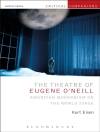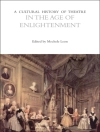Danish filmmaker Thomas Vinterberg’s searing film Festen (“The Celebration”) was the first film from the Dogme 95 stable. Adhering to Dogme’s cinematic purity — no artificial lighting, no superficial action, no credit for the director, and only handheld cameras for equipment — Festen was a commercial and critical success, winning the Jury Prize at Cannes in 1998 and garnering worldwide attention.
The film is set at the sixtieth birthday party of Helge, the wealthy patriarch of a large Danish family. The birthday festivities take a turn when Helge’s son Christian raises a toast and denounces Helge for having raped and abused him as a child, along with his twin sister, who recently committed suicide. The film explores the escalating consequences of Christian’s announcement, from the stunned dinner party’s collective denial, to violence, to an unexpected catharsis.
Tabela de Conteúdo
Acknowledgments
Introduction
Part I. Festen and Film History
1. Dogma 95 and Danish Cinema
2. The Auteur and Cinema History
3. Dogma 95 and the Death of Film
Part II. Festen’s bodies
4. The Handheld Camera
5. The Hotel
6. Sense Memory and the Haptic
Part III. Festen’s ghosts
7. The Story of Allan
8. Festen from Screen to Stage
9. Media and Time
Appendix A. Dogma 95 Manifesto and Vow of Chastity
Appendix B. Festen: Data
Appendix C. Thomas Vinterberg: An Annotated Filmography
Notes
Bibliography
Index
Sobre o autor
C. Claire Thomson is senior lecturer in the School of European Languages, Culture & Society at the University College of London. She is author of Thomas Vinterberg’s Festen (The Celebration) (UWP, 2013) and editor of Northern Constellations: New Readings in Nordic Cinema (Norvik Press, 2006).












